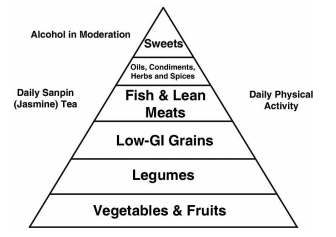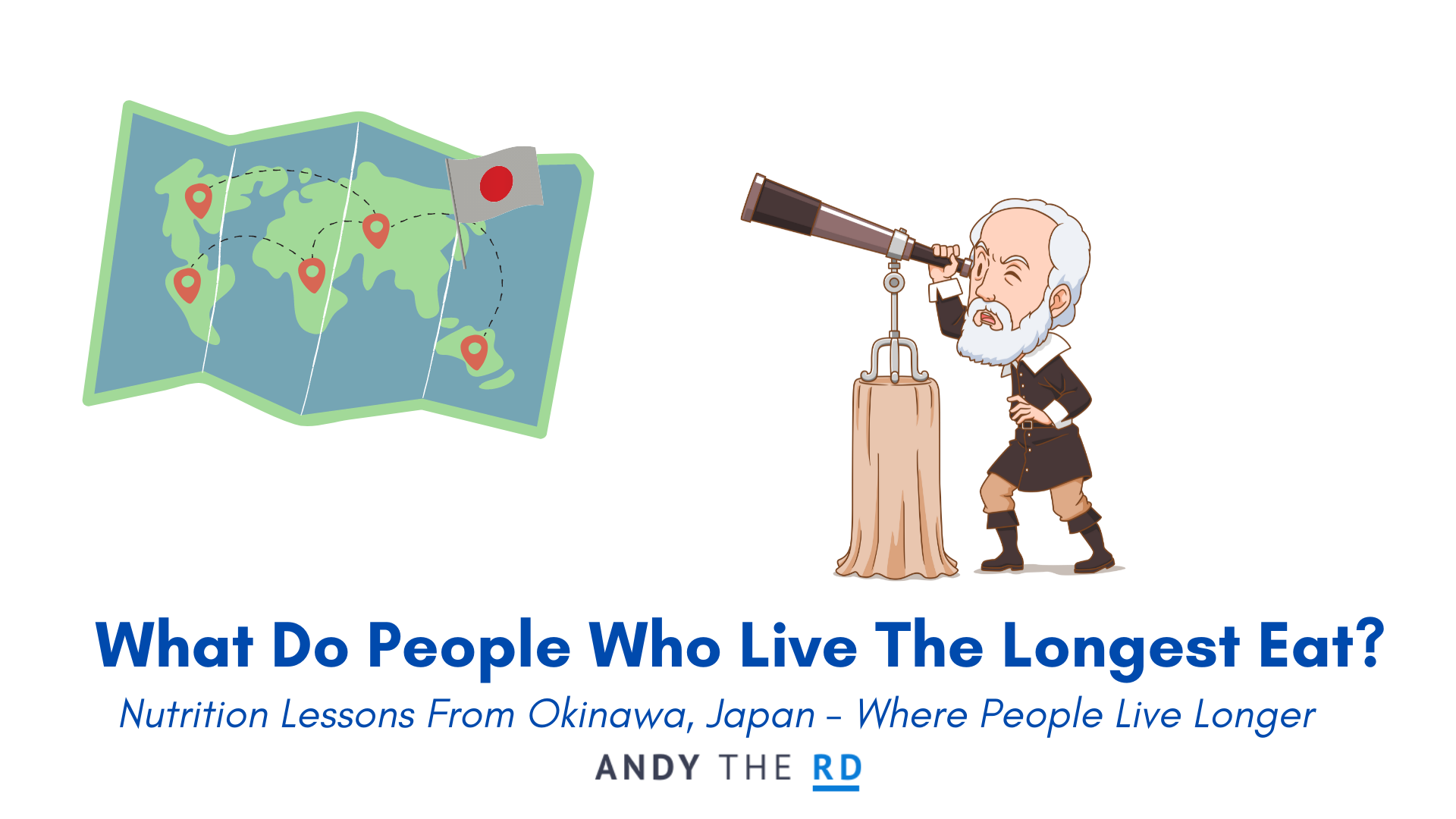According to the World Bank, the life expectancy in Canada in 2015 was about 82 years while that figure sits quite a bit lower at 78.75 in the United States.
In Japan, however, the average life expectancy is nearly 84 years of age, markedly different than the USA and noticeably higher than Canada as well.
Among countries with very large populations, the Japanese live the longest in the world.
Among all countries, Japan ranks in the top 5.
And so while I don’t actually have the secret to eternal life, what I do have are some very cool insights into what some of the people who live the longest in the world eat.
The Okinawa Advantage
You now know that the Japanese live longer than us and eat differently than we do.
But what you may not know is that, up until recently, there was a particular island region of the country ( Okinawa) that actually had life spans above the Japanese national average.
With that in mind, I knew I had to figure out what the people in this region ate and share it in today’s article.
Before that though, here are some very interesting facts about the traditional diets of the people of Okinawa.
What did they do differently in Okinawa?
The biggest dietary difference between Okinawa and mainland Japan is that Okinawan’s favour the purple-fleshed sweet potato over rice, and use it as the primary source of carbohydrates
As you can see in the rendition of the Okinawan dietary pattern below, the people of Okinawa also value legume intake very highly as well.
Purple sweet potatoes and legumes share important similarities including:
- Low glycemic index
- High antioxidant content
- High soluble fibre content

So that’s well and good, but a single question still remains.
What foods specifically did the people of Okinawa eat that are also accessible to us North Americans?
Let’s find out:
The 8 Foods That People Who Live The Longest Eat
1. Sweet Potato: Sweet potatoes contain a lot of the nutrients that the average person needs more of. They are low in glycemic index, high in soluble fibre ( which helps manage blood sugar+ blood cholesterol) , beta-carotene and a host of potent anti-oxidant compounds which make them an excellent starch choice at any meal.
2. Bitter Melon/Gourd: These very low calorie vegetables resemble cucumbers with a rough exterior and are exceptionally high in soluble fibre. They are often used in Okinawa either raw or cooked in both salads and stir frys.
3. Tofu: While the western world worries about whether or not soy might cause men to grow breasts (it doesn’t), the Japanese use this traditional food as an essential dietary staple. Much of the legumes the Okinawans eat tend to come from soy, which is rich in healthy antioxidant compounds known as flavonoids, among a variety of other healthful components.
4. Seaweed: Seaweed, which you may have only encountered before as part of your sushi at a local local Japanese restaurant, is a broad classification of edible marine algae that contain vitamins, minerals and antioxidants and can be easily incorporated into your daily life.
5. Turmeric: Turmeric is an Okinawan staple and is championed for it’s anti-oxidant and anti-inflammatory characteristics. Is it on your spice rack?
6. Shiitake Mushroom: This umbrella shaped mushroom is a well known and widely available delicacy that actually contains a compound that, when concentrated at ultra high doses, is actually authorized as an anti-cancer medication in Japan. Pretty fascinating stuff! These mushrooms are low calorie, high fibre and high in a variety of micronutrients.
7. Burdock: Burdock is a high fibre, low calorie root that contains inulin, which is a prebiotic fibre that promotes the growth of healthy bacteria in your gut.
8. Fennel: Used by Okinawans both as an edible vegetable and herbal medicine, this plant is part of the parsley family and its seeds are edible as well. In addition to numerous phytochemical compounds with potential antioxidant/anti-inflammatory capabilities, fennel also contains fibre, potassium and magnesium, which just about all of us need more of.
Final Thoughts
Are any of these foods part of your dietary pattern?
Should they Be? Could they be?
That’s up to you, but all I can say is that these are some of the foods consumed by the people who live longer than anyone else in the world, and they also happen to be accessible to us right here at home too.
Have you been wanting and waiting to change up your diet in 2023?
I’ve just given you a novel direction to roll with, and I hope you’ll pursue it!
Thank me later!
Andy De Santis RD MPH
A very special thank you to my Instagram follower @Eldeflower for giving me the inspiration for today’s article.



